The Zen of Technology & Scientific Discovery! (& Robots)
Collapse
X
-
The great swirl ...
New image reveals [our] supermassive black hole's swirling magnetic field
Astronomers have a new, more complete picture of the supermassive black hole at the center of a galaxy 55 million light-years from Earth -- the first black hole ever to be imaged.
While the first image of this black hole and its shadow was released in 2019, the new image released Wednesday shows the cosmic body in polarized light.
Think about your polarized sunglasses, which help reduce glare and reflections of brightness. Light can also be polarized when it's emitted in hot regions of space near magnetic fields. In this case, analyzing how the light around this black hole at the center of the M87 galaxy is polarized allowed astronomers a sharper view and the ability to map magnetic field lines near its inner edge. The scientists also discovered that a significant amount of light around the black hole is polarized.
In the new image, astronomers have been able to learn more about how the black hole launches energetic jets of material moving near the speed of light.
These bright jets of energy and matter extend about 5,000 light-years from the center of the galaxy. While most matter near the edge of a black hole falls inside it, some of the matter is able to escape just before and is blasted out in the jets. They were able to learn about the gas that actually produces the light in the image, as well as how the black hole grows ...
... The event horizon is defined as the boundary marking the limits of a black hole, which means nothing can cross that threshold and then escape it -- including light.
The gas around a black hole is moving incredibly fast due to the pull of gravity. Speed heats the gas to billions of degrees, causing atoms to separate and forming plasma of loose electrons and protons. These charged particles moving extremely fast create electromagnetic forces, Issaoun explained. "Magnetic fields created play a role in how the gas moves, how turbulent it is, and how much gas can make it to the black hole and how much gets flung out at nearly the speed of light in an outflow or jet," she said. "The production of these jets of plasma is the most powerful and energetic process in the entire universe and still quite a puzzle to unravel, and we believe magnetic fields play a key role in launching and maintaining this process."
In the polarized image, astronomers realized that the magnetic field is actively pushing back and resisting the motions of the gas that is dragged around the black hole. This means that the magnetic fields at the edge of the black hole are strong enough to help the hot gas resist the pull of gravity.
"Such 'strong' magnetic fields are capable of launching the most powerful jets, and their presence would have important implications for how black holes grow," Dexter said.
https://us.cnn.com/2021/03/24/world/...scn/index.html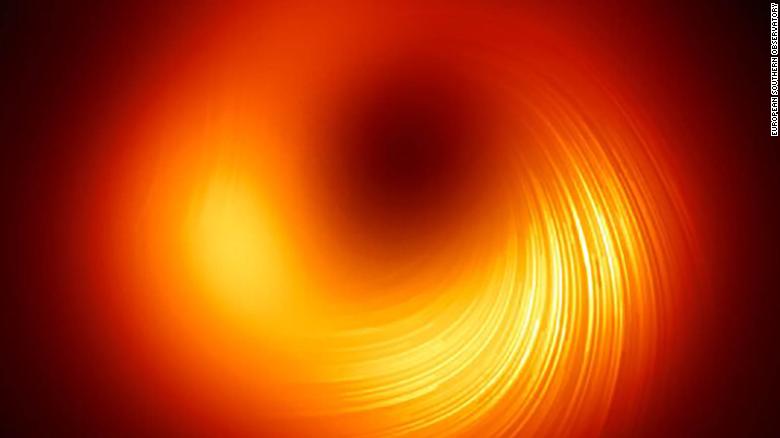
Gassho, J
STLahALL OF LIFE IS OUR TEMPLEComment
-
Okay, more lab grown mini-brains ...
Sorry, I don't fully understand. I guess that my brain is not sufficiently developed yet.Lab-grown mini ‘brains’ of humans and apes reveal why one got so much bigger
Using lab-grown mini-brains, scientists have figured out why humans have bigger brains than those of apes.
About 5 million to 8 million years ago, humans and apes diverged from a common ancestor. Some time after that, humans started evolving to have larger brains; now human brains are about three times bigger than the brains of chimpanzees, our closest living relatives.
If you ask "what's special about our brains," compared with other apes, the most obvious answer is size, said lead author Silvia Benito-Kwiecinski, a postdoctoral researcher at the MRC Laboratory of Molecular Biology in the United Kingdom. "There's been a strong selection of larger brains and so it would seem that our larger brains have something to do with our unique cognitive abilities."
Between 2.6 million and 11,700 years ago, human brains had a major growth spurt, doubling in size, Live Science previously reported. Due to a lack of fossil records dating back to the time of human brain expansion, scientists can't easily tease apart what prompted humans to grow larger brains; but with modern-day tools, we can now see how our brains grow differently than ape brains.
... the advent of organoid technology, which are models of organs grown in the lab, now makes it possible to look at these earlier stages. Scientists create these brain organoids from stem cells, or cells that can morph into any type of cell in the body, and reprogram those cells to grow into brainlike structures.
While these are not actual brains, they are still impressive mimics; previously, scientists have created brain organoids that could grow their own blood vessels or produce their own brain waves, Live Science previously reported.
... The researchers found that in human brains, neural progenitor cells take a couple of days longer to mature into these slower-dividing elongated cells than they do in chimpanzee and gorilla brains.
"It appears as if humans are delayed in the transition," to the spindle-like shape, Benito-Kwiecinski said. In that extra time before the transition, human progenitor cells divide more than their ape counterparts, creating more cells that will mature into brain cells, and therefore larger brains.
https://www.livescience.com/human-ap...fferences.html
Gassho, J
STlah
Human brain organoids (left) grew much bigger than gorilla organoids (middle) and chimpanzee organoids (right). Here the organoids are shown at 5 weeks old. (Image credit: S.Benito-Kwiecinski/MRC LMB/Cell)
 Last edited by Jundo; 03-25-2021, 12:46 PM.ALL OF LIFE IS OUR TEMPLE
Last edited by Jundo; 03-25-2021, 12:46 PM.ALL OF LIFE IS OUR TEMPLEComment
-
Scientists built a perfectly self-replicating synthetic cell
Scientists have crafted a single-celled synthetic organism that divides and multiplies just like the real thing. The advancement could someday help researchers to build miniscule computers and tiny drug-producing factories, all out of synthesized cells.
Of course, that future likely won't be realized for many years to come.
"There's just so many ways in which this coming century of biology could potentially change our daily lives for the better," said senior author Elizabeth Strychalski, leader of the Cellular Engineering Group at the National Institute of Standards and Technology (NIST). For example, Strychalski and her colleagues plan to engineer living sensors that can take measurements from their surrounding environments, monitoring the acidity, temperature and oxygen levels nearby.
These sensor cells could also be manufactured to produce specific products — namely medicines — and could potentially be placed inside the human body itself. "One vision is that when the cell senses a disease state, then it can make that therapeutic, and when a disease state is longer there, they could stop making that therapeutic," Strychalski said. Other cells could be cultured in the lab and used to efficiently produce food and fuel products, while still others could be made to perform computational functions at a molecular scale, she added.
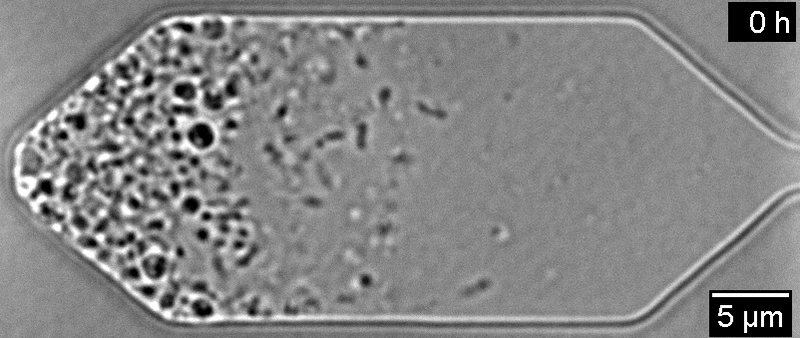
Series of micrograph images shows synthetic cells dividing
A new synthetic organism, called JCVI-syn3A, contains seven key genes that help it to divide as normal cells do.
Gassho J
stlahALL OF LIFE IS OUR TEMPLEComment
-
The Zen of Technology & Scientific Discovery!

There is a very famous scientist that has served under 6 US presidents and is the coathor of the text that is used to teach virtually all American doctors immunology and internal medicine. His name is listed 2nd from the top and I would carefully listen to anything he has to say about covid.
Gassho, Jishin, __/stlah\__.Last edited by Jishin; 03-31-2021, 09:04 PM.Comment
-
Here's an anti-cool story:
Antimatter cooled to near absolute zero by laser beam
The researchers believe the technique will enable them to study some of the universe’s fundamental symmetries.
Researchers have cooled antimatter to near absolute zero for the first time — by capturing it in a magnetic trap and blasting it with concentrated laser light.
The method enabled scientists in Canada working at CERN's Antihydrogen Laser Physics Apparatus (ALPHA) experiment to cool antimatter to temperatures just one-twentieth of a degree above absolute zero, making it over 3,000 times colder than the coldest recorded temperature in the Antarctic.
In theory, this extra-chilled antimatter could help reveal some of the universe's biggest secrets, such as how antimatter is affected by gravity and whether some of the fundamental theoretical symmetries proposed by physics are real.
https://www.livescience.com/cooling-...ith-laser.html
What's important in picking a planet or opening a restaurant? Location, location, location ...
To our friends in New Zealand ... Oh, what might have been! ...Astronomers find the 'safest place' to live in the Milky Way
Astronomers have searched the entire Milky Way to identify the safest places to live. It turns out, we're in a pretty good spot.
But if the past year has made you feel ready to relocate to another planet, you might want to look toward the center of the galaxy, according to the new research.
The new findings were made by a group of Italian astronomers, who studied locations where powerful cosmic explosions may have killed off life. These explosions, such as supernovas and gamma-ray bursts, spew high-energy particles and radiation that can shred DNA and kill life. By this logic, regions that are more hospitable to life will be the ones without frequent explosions, the astronomers reasoned.
https://www.livescience.com/safest-s...milky-way.html
Hidden boundaries of lost continent 'Zealandia' revealed in incredible detail
A new ocean-mapping expedition is drawing the boundaries of Zealandia, a submerged "lost continent" that hosts New Zealand and the territory of New Caledonia in the South Pacific.
Zealandia broke off from the supercontinent Gondwana between 79 million and 83 million years ago. Except for New Zealand and New Caledonia, this fragment of continental crust now sits on the ocean floor. It's not the only bit of continental crust that's detached from a larger continent, but it is the largest at 1.9 million square miles (4.9 million square kilometers). That's six times larger than the next-largest continental fragment, the microcontinent of Madagascar.
https://www.livescience.com/lost-con...ia-mapped.html
Some interesting stories from the "could be maybe" category ...
Dark matter 'annihilation' may be causing the Milky Way's center to glow
A mysterious glow coming from the center of the Milky Way might be caused by annihilating dark matter — elusive matter that emits no light.
According to new research, heavy dark matter particles may be destructively colliding at the center of the galaxy, creating elementary particles, as well as gamma rays — the unexplained light seen emanating from the galactic center.
The source of this unexplained light, called the galactic center excess (GCE), has been debated by scientists ever since it was discovered in 2009. When analyzing data from NASA's Fermi Gamma-ray Space Telescope, scientists noticed a faint glow of gamma rays that couldn't be explained by known sources. In the years since, scientists have proposed a range of sources, from dark matter to more conventional sources, such as extremely fast-spinning stars called millisecond pulsars. https://www.livescience.com/dark-mat...y-to-glow.htmlDark matter could be made of black holes from the beginning of time
Dark matter, the mysterious substance that exerts gravitational pull but emits no light, might really consist of vast concentrations of ancient black holes created at the very start of the universe, according to a new study.
That conclusion comes from an analysis of the gravitational waves, or ripples in space-time, produced by two distant collisions between black holes and neutron stars.
The ripples — labeled GW190425 and GW190814 — were detected in 2019 by the Laser Interferometer Gravitational-Wave Observatory (LIGO) in Washington and Louisiana, and the Virgo Interferometer near Pisa, Italy.
https://www.livescience.com/dark-mat...ack-holes.htmlGassho, JA remnant of a protoplanet may be hiding inside Earth
A protoplanet slammed into the Earth about 4.5 billion years ago, knocking loose a chunk of rock that would later become the moon. Now, scientists say that remnants of that protoplanet can still be found, lodged deep inside Earth, Science Magazine reported.
If remains of the protoplanet, known as Theia, did stick around after the impact, that may explain why two continent-size blobs of hot rock now lie in the Earth's mantle, one beneath Africa and the other under the Pacific Ocean. These massive blobs would stand about 100 times taller than Mount Everest, were they ever hauled up to Earth's surface, Live Science previously reported.
Theia's impact both formed the moon and transformed Earth's surface into a roiling magma ocean, and some scientists theorize that the blobs formed as that ocean cooled and crystalized, Science reported. Others think the blobs contain Earth rocks that somehow escaped the effects of the collision and nestled, undisturbed for millions of years, near the planet's center.
https://www.livescience.com/theia-ma...tle-blobs.html
STlahLast edited by Jundo; 04-04-2021, 04:54 AM.ALL OF LIFE IS OUR TEMPLEComment
-
Apparently, those darn muon precesses throw off the whole universe ... or, at least, our understanding of it:
A short video on what this about ...On Wednesday, a scientific measurement, recorded by this apparatus, was publicly released. ... this single measurement tells scientists that their theory about what is called the standard model of particle physics is incomplete -- and has to be rethought.
As counterintuitive as it may seem, this is not bad news. The purpose of science is to seek truth. With this goal in mind, researchers are constantly returning to their data and checking to see if measurements and theories agree or disagree. While agreement is always satisfying, it's in the disagreement that progress is made. When a theory is shown to predict something other than what a valid measurement has revealed, scientists rethink their theory and adjust it.
The standard model of particle physics, at the center of this news, explains the world of atoms and smaller things, and it was developed in the 1960s and 1970s. It has been universally accepted in the scientific world as being the most accurate subatomic theory devised so far. But that venerable model could well need to be changed because of this new measurement, which gives us reason to believe that the standard model is incomplete.
What the standard model predicts -- and what this new measurement assesses -- are the magnetic properties of an ephemeral subatomic particle called a muon, which is very similar to the familiar electron, but with some differences. Muons are about 200 times heavier than electrons and they decay in a little over a millionth of a second. Otherwise, electrons and muons have a lot in common. ... They both, for instance, have electric charge and they spin. A spinning electric charge becomes a magnet. And if you generate a magnetic field and put a spinning charge in it, the charge precesses like a top does, tracing out a circle with its tip while it spins.
Scientists can use accepted laws of physics to predict just how fast the muon should precess. So, over two decades ago, researchers working at the Brookhaven National Laboratory on Long Island, New York, conducted what is called the Muon g-2 (gee minus two) experiment.
These scientists measured how fast the muon actually precesses and the prediction from the standard model and measurement disagreed. When data and theory disagree, one (or both) of them, must be wrong. And if the theory is wrong, that's because scientists overlooked something when they crafted it.
...The disagreement between measured and predicted precession properties of muons could have meant that our best understanding of the subatomic world is overlooking something. Or it could have meant that the original experiment was flawed in some way. A second and hopefully more precise measurement was needed.
However, the equipment at Brookhaven had been pushed to its limit. A more precise measurement required that another laboratory get involved. Enter Fermilab, America's flagship particle physics laboratory, located just west of Chicago. ... And they just released their first experimental results. Not only do the prediction and new and improved measurement of the magnetic properties of muons still disagree, but the increased precision is even more suggestive that there is something important being overlooked in the standard model theory.
https://us.cnn.com/2021/04/07/opinio...oln/index.html
HOWEVER!
Gassho, JHowever, a rival calculation made by a separate group and published Wednesday (April 7) in the journal Nature could rob the wobble of its significance. According to this team's calculations, which give a much larger value to the most uncertain term in the equation that predicts the muon's rocking motion, the experimental results are totally in line with predictions. Twenty years of particle chasing could have all been for nothing.
"If our calculations are correct and the new measurements do not change the story, it appears that we don't need any new physics to explain the muon's magnetic moment — it follows the rules of the Standard Model," Zoltan Fodor, a professor of physics at Penn State and a leader of the research team that published the Nature paper, said in a statement.
But Fodor added that, given that his group's prediction relied upon a totally different calculation with very different assumptions, their results were far from being a done deal. "Our finding means that there is a tension between the previous theoretical results and our new ones. This discrepancy should be understood," he said. "In addition, the new experimental results might be close to old ones or closer to the previous theoretical calculations. We have many years of excitement ahead of us."
In essence, physicists won't be able to conclusively say if brand-new particles are tugging on their muons until they can agree exactly how the 17 existing Standard Model particles interact with muons too. Until one theory wins out, physics is left teetering in the balance.
https://www.livescience.com/muon-wob...k-physics.html
STLahLast edited by Jundo; 04-08-2021, 03:57 PM.ALL OF LIFE IS OUR TEMPLEComment
-
This is so cool!!!Apparently, those darn muon precesses throw off the whole universe ... or, at least, our understanding of it:
A short video on what this about ...
HOWEVER!
Gassho, J
STLah
Gassho,
Jakuden
SatToday/geeked out about Muons
Sent from my iPhone using Tapatalk ProLast edited by Jundo; 04-08-2021, 03:58 PM.Comment
-
This story will take your breath away, as the earth once took a breather ...
And I'll be a monkey's uncle ...Earth nearly lost all its oxygen 2.3 billion years ago
A new study pushes the permanent rise of oxygen in the atmosphere to 100 million years later than previously believed.
Earth's transition to permanently hosting an oxygenated atmosphere was a halting process that took 100 million years longer than previously believed, according to a new study.
When Earth first formed 4.5 billion years ago, the atmosphere contained almost no oxygen. But 2.43 billion years ago, something happened: Oxygen levels started rising, then falling, accompanied by massive changes in climate, including several glaciations that may have covered the entire globe in ice.
Chemical signatures locked in rocks that formed during this era had suggested that by 2.32 billion years ago, oxygen was a permanent feature of the planet's atmosphere.
But a new study delving into the period after 2.32 billion years ago finds that oxygen levels were still yo-yoing back and forth until 2.22 billion years ago, when the planet finally reached a permanent tipping point. This new research, published in the journal Nature on March 29, extends the duration of what scientists call the Great Oxidation Event by 100 million years. It also may confirm the link between oxygenation and massive climate swings.
... Researchers are still working out what caused all these fluctuations, but they have some ideas. One key factor is methane, a greenhouse gas that's more efficient at trapping heat than carbon dioxide.
Today, methane plays a small role in global warming compared with carbon dioxide, because methane reacts with oxygen and disappears from the atmosphere within about a decade, whereascarbon dioxide sticks around for hundreds of years. But when there was little to no oxygen in the atmosphere, methane lasted a lot longer and acted as a more important greenhouse gas. ...
... Eventually, another geological change broke this oxygenation-glaciation cycle. The pattern seems to have ended about 2.2 billion years ago when the rock record indicates an increase in organic carbon being buried, which suggests that photosynthetic organisms were having a heyday. No one knows exactly what triggered this tipping point, though Bekker and his colleagues hypothesize that volcanic activity in this period provided a new influx of nutrients to the oceans, finally giving cyanobacteria everything they needed to thrive. At this point, Bekker said, oxygen levels were high enough to permanently suppress methane's oversized influence on the climate, and carbon dioxide from volcanic activity and other sources became the dominant greenhouse gas for keeping the planet warm.
https://www.livescience.com/earth-ea...luctuated.html
Gassho, JFirst 'Homo' species left Africa with ape-like brains
Early humans in Eurasia had "primitive" brains.
Early humans still had great ape-like brains, according to a new study that found modern humans evolved to have our "advanced" thinking organs relatively recently, between 1.7 million and 1.5 million years ago.
This means that the unique brain of modern humans (Homo) developed more than 1 million years after the Homo genus arose, and after the first Homo erectus migrated out of Africa, according to the study, published online Thursday (April 7) in the journal Science.
The finding overturns a previously held view that humans' frontal lobe — the part of the brain that processes complex cognitive tasks, including social thought, tool use and language — developed at the transition from Australopithecus to Homo, which happened roughly 2.8 million to 2.5 million years ago, the researchers said.
Because brains are made of soft tissues that don't fossilize, the researchers instead examined fossilized endocasts, or the skull region that housed the brain, to determine how the organ changed over time.
... It remains a mystery why Homo brains evolved to have a sophisticated frontal lobe, but scientists have a few ideas. Perhaps, it's an instance of the so-called "Baldwin effect," when an ability to learn a new behavior can drive changes to genetics and phenotype, or appearance, Zollikofer said. In this case, it's possible that brain structures responsible for language and other complex cognitive tasks grew in an environment that fostered and needed proto-language-like communication, he said.
"We hypothesize a positive feedback between cultural innovation and evolutionary brain reorganization," Zollikofer explained. That said, even if brain structures for early language were "in place" about 1.5 million years ago, "we do not know whether these early Homo populations had a modern human-like language," he said. Instead, early humans likely had "some kind of proto-language that — in the sense of brain-culture coevolution — favored the evolution of these brain structures, and these brain structures favored the evolution of proto-language."
PICTURE: An early Homo skull from Dmanisi, Georgia (left) next a later Homo skull from Sangiran, Indonesia (right). A virtual reconstruction of their brains shows how the Dmanisi individual had a great ape-like brain, while the Sangiran individual had a modern human-like brain.
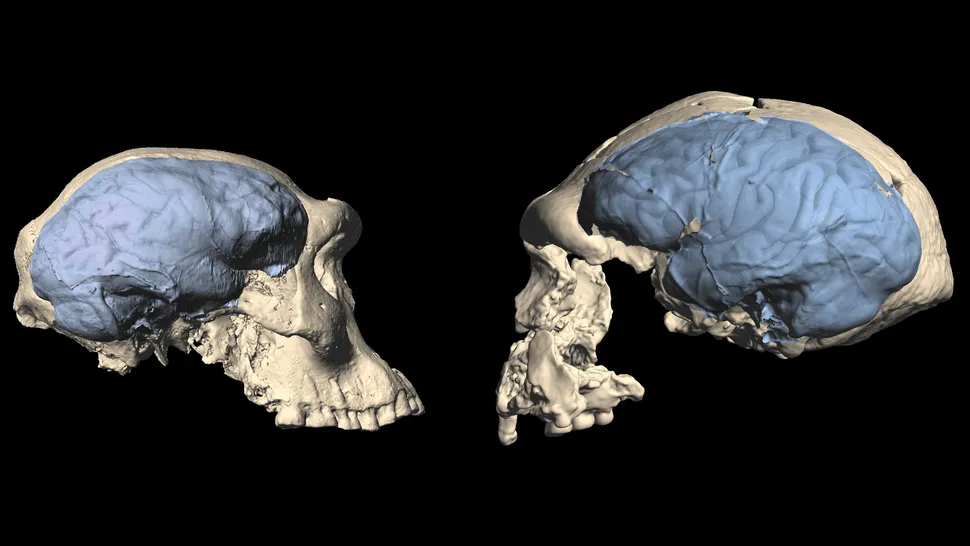
STLahALL OF LIFE IS OUR TEMPLEComment
-
The web of life ... see with your ears, hear with your eyes ...
MIT scientists translated spider webs into music. It could help us talk to them
Scientists at the Massachusetts Institute of Technology have turned spider webs into music -- creating an eerie soundtrack that could help them better understand how the arachnids spin their complex creations and even how they communicate.
The MIT team worked with Berlin-based artist Tomás Saraceno to take two-dimensional laser scans of a spider web, which were stitched together and converted into a mathematical model that could recreate the web in 3D in virtual reality. They also worked with MIT's music department to create the harplike virtual instrument.
"Even though the web looks really random, there actually are a lot of internal structures and you can visualize them and you can look at them, but it's really hard to grasp for the human imagination or human brain to understand all these structural details," said MIT engineering professor Markus Buehler ... Listening to the music while moving through the VR spider web lets you see and hear these structural changes and gives a better idea of how spiders see the world, he told CNN.
"Spiders have very keen vibrational sensors, they use vibrations as a way to orient themselves, to communicate with other spiders and so the idea of thinking literally like a spider would experience the world was something that was very obvious to us as spider material scientists," Buehler said.
https://edition.cnn.com/2021/04/14/t...Most+Recent%29
Gassho, J
STLahALL OF LIFE IS OUR TEMPLEComment
-
Let us be grateful for all the parts of our bodies which evolution has pooped out ... I mean, "popped" out ...
... and in a related story, also from this week ...Your most distant cousin doesn't even have an anus
The entire history of the animal kingdom is like a long highway, with different species exiting at different points to pursue their own evolutionary paths. And sea sponges got off at the highway's first exit, ending up in the most distant corner of the country.
Scientists recently compared the genetics of sponges with that of another unusual animal: comb jellies. They say their research, published March 19 in the journal Nature Communications, resolves a debate: Some biologists already considered sponges the most distant cousins of all other animals; others argued that comb jellies were the true "sister to all other animals."
... Taking this approach to the entire diversity of animals on Earth would suggest that sponges split off longest ago. They don't have muscles, nervous systems, organs or even the traditional mouth-to-anus digestive tract common to all other members of the animal kingdom. Their animal traits are basic: They're made of multiple cells, produce sperm, lack cell walls and need to eat for energy.
Comb jellies, which have muscles, simple anuses and nerves despite so many other differences from most animal life on Earth, seem to have diverged more recently — belonging to the same non-sponge branch of animal life as human beings, sea lions and tarantulas.https://www.livescience.com/sea-spon...cs-debate.html
Uranus is just big.Mysterious X-rays are flaring out of Uranus
Uranus is always full of surprises.
For the first time, astronomers have detected mysterious X-rays flaring out of Uranus.
How is this happening? According to NASA scientists, Uranus is so massive that it could just be scattering X-rays given off by the sun more than a billion miles away. Or, perhaps the fine rings of dust surrounding Uranus are generating their own radiation through some unknown process. A closer study of Uranus is required to know for sure.
https://www.livescience.com/uranus-x...-detected.html
Gassho, J
STLahLast edited by Jundo; 04-15-2021, 02:16 AM.ALL OF LIFE IS OUR TEMPLEComment
-
Watch two black holes bend the daylights out of space-time in this trippy NASA visualization
When two orbiting supermassive black holes get close to each other, the results can be pretty twisted. A new NASA visualization shows how the irresistible pull of extreme gravity bends and distorts light in the glowing rings of hot gas circling the black holes in a simulated binary system.
The animation shows two black holes: The bigger of the pair, which is about 200 million times the mass of our sun, is surrounded by red rings of hot gas called an accretion disk. Orbiting that giant is a second black hole weighing in at about half of that mass, and its gas and dust rings are illustrated in bright blue.
Powerful gravitational forces tug and warp the fabric of space-time as one black hole orbits the other, bending the light from the dance partners' glowing accretion disks. And the closer you get to one of these warped giants in the simulation, the more contorted the other appears, NASA representatives said in a statement.
The above comes with its own soundtrack, but I advise turning down the sound and playing along with this ...
Gassho J
stlahLast edited by Jundo; 04-19-2021, 01:47 PM.ALL OF LIFE IS OUR TEMPLEComment
-
A diagram showing the border of the Local BubbleSmall NASA rocket will study boundary of interstellar space
For a few brief minutes, a suborbital rocket from NASA has an ambitious plan to seek out particles from interstellar space.
A mission called Spatial Heterodyne Interferometric Emission Line Dynamics Spectrometer (SHIELDS) will lift off from the White Sands Missile Range in New Mexico no earlier than Monday (April 19). It will soar to a peak height of 186 miles (roughly 300 kilometers) — a little more than half the altitude of the International Space Station — and peer at the sky for a few minutes with its telescope.
With this capability, it is possible to see light from particles from beyond our solar system even on a short flight outside the Earth's atmosphere. The mission follows a similar study in 2014; this mission will extend the project's scope.
To understand what SHIELDS is looking for, it's best to start with a quick overview of our solar system structure and nearby regions. The planets, asteroids, gas, dust and everything else in our neighborhood is situated in a cluster of gas clouds, called the Local Bubble. The bubble is roughly 300 light-years long and encompasses hundreds of stars, including our own sun.
Inside this structure, our solar system is encased in a magnetic bubble created by the sun that's known as the heliosphere. As the heliosphere moves through the Local Bubble at roughly 52,000 mph (84,000 km/h), particles from interstellar space fall on the heliosphere "like rain against a windshield," NASA said in a release.
"Our heliosphere is more like a rubber raft than a wooden sailboat: its surroundings mold its shape," NASA continued in the release. "Exactly how and where our heliosphere's lining deforms gives us clues about the nature of the interstellar space outside it."
SHIELDS will examine light from hydrogen atoms that originated in interstellar space. These atoms have equal balances of fundamental particles called protons (positive charge) and electrons (negative charge). Since the positive and negative charges balance each other out, the interstellar hydrogen atoms have a neutral electrical charge, which allows them to cross magnetic field lines.
The mission will look at what happens to the trajectories of the atoms as they creep into the heliopause. "Charged particles flow around the heliopause, forming a barrier, [but] neutral particles from interstellar space must pass through this gauntlet, which alters their paths," NASA noted.
SHIELDS will seek out the light from these hydrogen atoms and measure how far the wavelength stretches or contracts, which indicates how the particles are moving through space. This information will allow investigators to figure out the shape and matter density around the heliopause barrier — giving some more clues about interstellar space and the clouds within it.
"There's a lot of uncertainty about the fine structure of the interstellar medium — our maps are kind of crude," Walt Harris, principal investigator for SHIELDS and a solar and heliospheric researcher at the University of Arizona, said in the same NASA release. "We know the general outlines of these clouds, but we don't know what's happening inside them."
SHIELDS will likely also give scientists insights about the galaxy's magnetic field, and perhaps allow astronomers to make some predictions about where our solar system will be in the far future. Scientists project that our neighborhood will move out of the Local Bubble in 50,000 years based on its current speed and trajectory, but to where is poorly understood. (It's far from the first time Earth, the planets and nearby stars have done this, but we haven't been able to document the phenomenon in real-time before.)
The local observations SHIELDS gathers will augment some data from interstellar space itself. The twin Voyager spacecraft, which launched in 1977, continue to send back observations about their journey through interstellar space. In December, for example, the mission spotted a newly found kind of electron burst that could give more insights into flaring stars.
https://www.livescience.com/sounding...particles.html
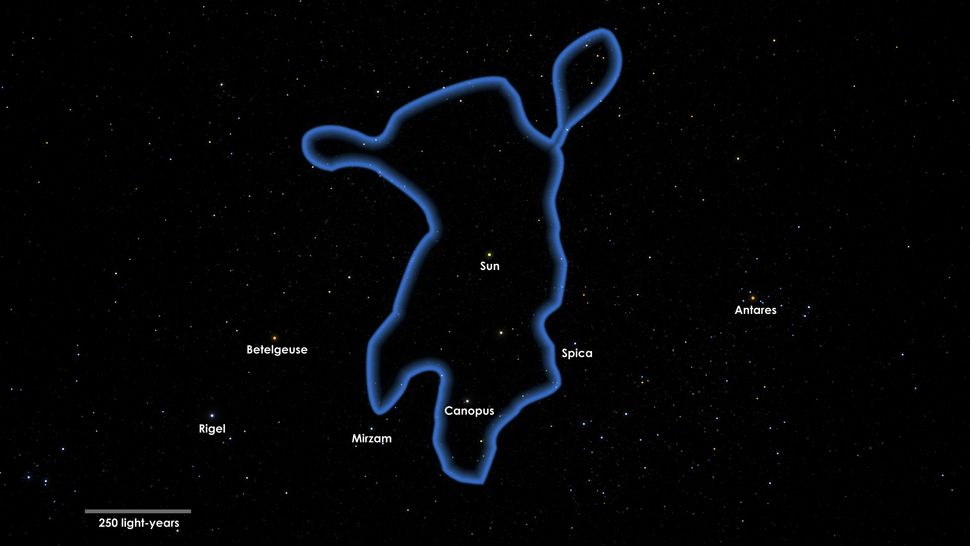
Probably just a coincidental resemblance ...

Gassho, J
STLahALL OF LIFE IS OUR TEMPLEComment
-
A crusty, old discovery ...
Anti-stars? So far, the search is anti-climatic ...Earth's crust is way, way older than we thought
Earth's continents have been leaking nutrients into the ocean for at least 3.7 billion years, new research suggests.
Like a fine French bread, Earth would be nothing without its crust. And like a fine French wine, that crust has aged exceptionally well.
The rigid, rocky continental crust has been a feature of the planet for billions of years (though only a small percentage of today's crust dates back that far). How many billions of years, exactly, is hard to say. To calculate the age of continents, researchers study the decay of ancient chemicals trapped in rocks — typically, in carbonate minerals recovered from the ocean. But those minerals are hard to find, and they are rarely in pristine enough condition to analyze.
Now, a team of scientists has devised a new way to date ancient chunks of crust — and according to their latest research, we've misjudged the age of the continents by half a billion years.
In research presented April 26 at the virtual European Geosciences Union (EGU) General Assembly 2021 conference, the team showed that by analyzing a mineral called barite — a combination of ocean salts and barium released by volcanic ocean vents — they found evidence that Earth's continental crust was around at least 3.7 billion years ago, much older than previous estimates.
https://www.livescience.com/earth-co...we-thought.htm
Gassho, JStars made of antimatter could exist in the Milky Way
Astronomers try to solve the mystery of antihelium by searching for antistars.
Out of an estimated 100 billion stars in our galaxy, no more than 14 may be made from antimatter. That's the result from a new study that scoured the Milky Way for signs of antistars — which are identical to regular stars save for the fact that they would burn antimatter at their cores.
Though the findings turned up mostly empty this time, researchers haven't yet fully ruled out the existence of antistars, whose presence would change much about our understanding of the universe.
The recent search for antistars can be traced back to 2018, when a $1.5-billion experiment called the Alpha Magnetic Spectrometer (AMS) that's attached to the International Space Station captured a few examples of what might be antimatter.
Antimatter is exactly like regular matter but its charge is reversed, so the antimatter equivalent of positively charged protons are negatively charged antiprotons. In this case, AMS detected what looked like antihelium, which has a nucleus composed of two antiprotons and two antineutrons.
Cosmic rays can sometimes hit ordinary matter and produce simple antimatter particles, like antiprotons and positrons — the charge-reversed version of an electron. But no known process can create something complex like antihelium, Simon Dupourqué, a doctoral candidate in astrophysics at the University of Toulouse in France, told Live Science.
That got him and his colleagues wondering: Where exactly could this antihelium have come from? While physicists are reasonably certain that no large pockets of antimatter exist in the universe, some theorists have suggested that bits of the charge-reversed material could have collected into star-like objects, essentially forming antistars.
Antistars would fuse antihydrogen into antihelium to produce light, but they would otherwise look fairly ordinary. "If these objects existed, we could not distinguish them from a regular star," Dupourqué said.
But when antimatter and regular matter meet, they violently annihilate each other, leaving behind nothing but gamma rays. So ordinary matter floating through the cosmos in the form of gas and dust would hit these antistars, generating excess gamma radiation, Dupourqué said.
By combing through data from NASA's Fermi gamma-ray telescope, he and his co-authors uncovered 14 examples of small compact objects shining brightly in gamma rays that didn't show up in other star catalogs, meaning scientists don’t know what they are. That could make them potential antistar candidates. Their findings appeared April 20 in the journal Physical Review D.
The team isn't yet claiming that these are antistars, though. "They are much more likely to be something else," said Dupourqué, such as previously unknown gamma-ray emitters such as powerful pulsars or distant active galactic nuclei. If they were antistars, "it would change the way we think the universe formed," he added.
That's because cosmologists believe that shortly after the Big Bang nearly equal amounts of matter and antimatter were created. These twin materials crashed together into a spectacular spray of energy, leaving behind mainly matter, which was created in slightly higher proportions, according to an explainer from CERN.
Nobody knows how or why more matter was formed, creating what is known as the matter-antimatter asymmetry problem. If antistars existed, it might mean that some of that original antimatter somehow managed to survive for longer than scientists previously thought possible, Dupourqué said.
STLahLast edited by Jundo; 05-02-2021, 01:05 PM.ALL OF LIFE IS OUR TEMPLEComment
-
I have little idea what this means, but love the description ...
But, alas, some calculations are not easy ... I can only predict what no body will not do ...8 extremely rare 'millisecond pulsars' discovered inside globular clusters
These "cosmic clocks" can help researchers answer big questions in physics.
An international team of astronomers has discovered eight rare millisecond pulsars hiding inside dense clusters of stars surrounding the Milky Way.
A pulsar is a neutron star — city-sized stellar objects packed with a mass of at least 1.4 times the mass of our sun, which emerge from the explosive deaths of their parent stars — that gives off two beams of radio waves at each pole, due to its strong magnetic field, while also rapidly spinning because of its incredibly large mass. From our perspective, they look like flashing stars, visible only when the beams shine directly at us.
"The vast majority of pulsars rotate once every few hundreds of milliseconds or more," or a handful of times a second, lead author Alessandro Ridolfi, a postdoctoral research fellow at the Astronomical Observatory of Cagliari in Italy, told Live Science. "A millisecond pulsar, on the other hand, is a pulsar that spins hundreds of times per second or, equivalently, once every few milliseconds."
In a new study, Ridolfi and his colleagues used the MeerKAT telescope — an array of 64 individual satellite dishes run by the South African Radio Astronomy Observatory (SARAO) — to search specifically for millisecond pulsars, which are much more rare than slower spinning pulsars. To do this, they focused on nine globular clusters — a collection of stars that are bound together by their own gravity and orbit outside the edge of a galaxy — surrounding the Milky Way; they found eight millisecond pulsars within five of those clusters, making it one of the biggest millisecond pulsar studies so far.
Millisecond pulsars are quite rare because their rapid spins can be achieved only in binary systems. In such systems, two stellar bodies rotate around one another; for pulsars, the neutron star's partner is usually a star like our sun, but occasionally one member of the binary is something more exotic, such as a white dwarf, another neutron star or even a black hole, Ridolfi said.
"To reach such a high rotational speed, the neutron star needs to acquire rotational motion by stealing matter from a companion star for a very long time," meaning billions of years, Ridolfi said. "For this reason, millisecond pulsars can only form in binary systems and are much more rare than the other pulsars."
However, globular clusters are teeming with stars and subject to strong gravitational forces, which makes it much more likely for binary systems to form. As a result, more of the pulsars inside these regions can become millisecond pulsars.
...
"Millisecond pulsars can be regarded as super-precise cosmic clocks," Ridolfi said. "They rotate much more stably than longer-period pulsars, and hence are much more suitable for high-precision experiments."
For instance, these whirling cosmic lighthouses can be used to measure the mass of neutron stars, study the evolution of binary systems, detect gravitational waves, locate black holes at the centers of globular clusters, test General Relativity — Einstein's theory of how matter warps space-time — and carry out many more complex physics experiments, Ridolfi said.
Physicists get close to taming the chaos of the 'three-body problem'
Physicists have spent centuries grappling with an inconvenient truth about nature: Faced with three stars on a collision course, astronomers could measure their locations and velocities in nanometers and milliseconds and it wouldn't be enough to predict the stars' fates.
But the cosmos frequently brings together trios of stars and black holes. If astrophysicists hope to fully understand regions where heavenly bodies mingle in throngs, they must confront the "three-body problem."
While the result of a single three-body event is unknowable, researchers are discovering how to predict the range of outcomes of large groups of three-body interactions. In recent years, various groups have figured out how to make statistical forecasts of hypothetical three-body matchups ...
...
When gravity draws two objects together, the potential outcomes are simple. The objects might zoom by each other, or they might enter into an elliptical orbit around a shared center of mass. Isaac Newton was able to write down brief equations capturing these motions in the 1600s.
But if one star approaches a pair of stars already orbiting each other, all bets are off. The intruder might zoom by in a predictable way. Or it could enter the fray, initiating a period of furious loops and swerves that might last for moments or years. Eventually, the furor always subsides when one of the three stars is thrown clear of the other two. One of two scenarios will follow: If the third wheel has enough energy, it escapes, leaving the pair to live in peace. Or if it doesn't, that third object will zip away only to fall back toward the pair again and launch another episode of mayhem.
Last edited by Jundo; 05-05-2021, 11:16 PM.ALL OF LIFE IS OUR TEMPLEComment



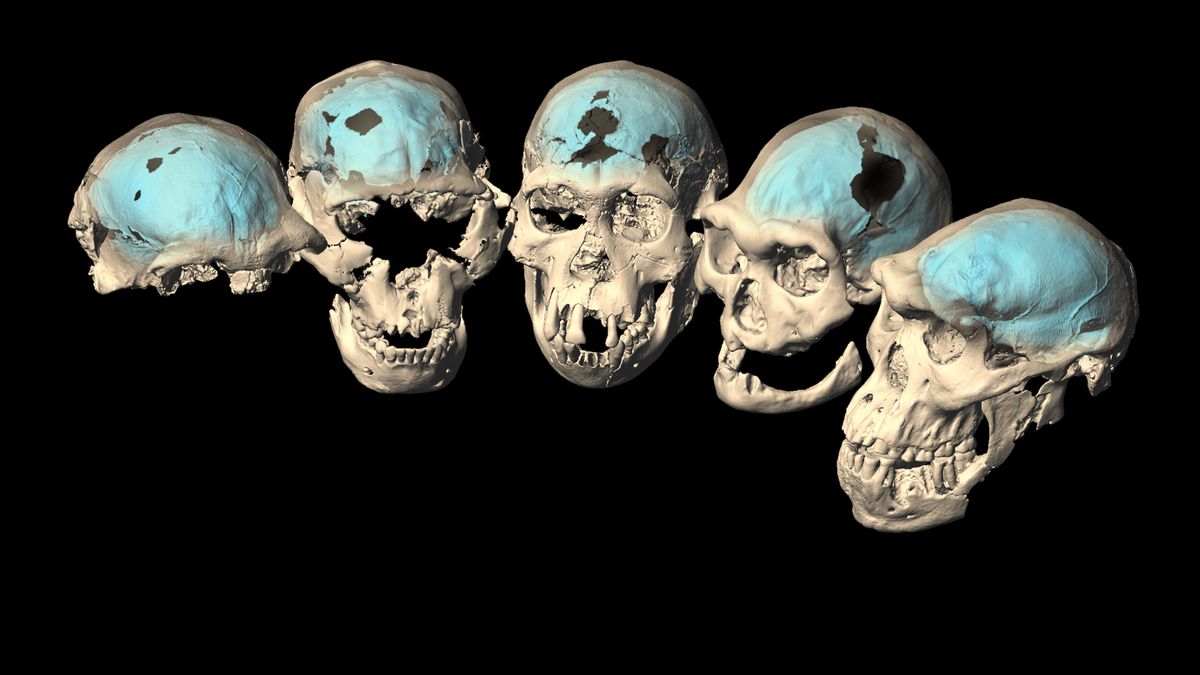



Comment